Atascadero residents feel abandoned by city after January floods ruined their homes
The rain was pounding down on their single-story home in Atascadero on Jan. 9 when homeowner Alicia Morin, 76, and her roommate Darla Deats, 84, peered out the bedroom window at the scene outside.
“The front yard was like a lake. The backyard looked like a lake. The street looked like a river. And the water kept coming down the little creek,” Deats said of the home on Azucena Avenue.
It didn’t take long for the flow to breach the house, and soon 8 inches of contaminated water covered all 1400 square feet of the home. The pair said they had no choice but to evacuate.
“A nearby friend picked us up, three dogs and my friend (Deats) and myself,” Morin said. “We took just what we could carry.”
It’s a familiar story for several Atascadero families who were displaced after their homes sustained considerable damage from the series of storms that hit San Luis Obispo County last winter.
Aaron Spiller, whose property was eroded by the flooding of Graves Creek, sued the city for failing to maintain public assets, such as Graves Creek, Atascadero Creek and Atascadero Lake.
The Tribune spoke with multiple residents who described feeling abandoned by their city in a time of disaster.
“They didn’t put out a dime to help any of us and had no idea what we were going through and didn’t care,” Morin said.
Other Atascadero homeowners in her neighborhood expressed similar discontent with the city’s response to damage from the winter 2023 storms.
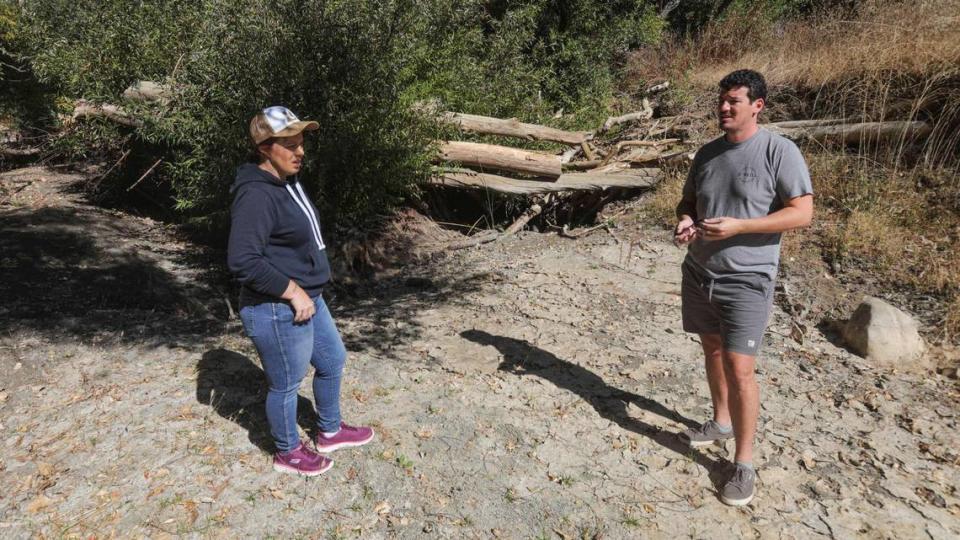
“So many people were affected, so I really just assumed that the city would be stepping in and directing and helping us understand, letting us know what happened, and there was just really no response at all from the city,” Atascadero homeowner Jamie Lind told The Tribune.
Terrie Banish, director of community services and events for the city of Atascadero, declined The Tribune’s request for an interview with the Public Works Department about flood damage to private properties throughout the city, citing potential litigation.
She did supply a statement:
“During the January and March 2023 storms, Public Works was responding to reports all across the city that included plugged culverts and drains, downed trees blocking roads, flooded roads and several bridges over Atascadero creek being overtopped,” Banish wrote in an email.
“While the city cannot perform work on private property, during and immediately following the storm events, staff from all departments answered phones, responded to emails and posts and provided information on available resources, encouraged property owners to take the necessary steps to protect themselves and their properties, and pointed them in the direction of a variety of services needed depending upon the situation or concern,” the statement said.
The full statement from the City of Atascadero is available at bit.ly/Atascadero-statement.
Atascadero water damage company inundated with calls after winter storms
When homeowners call Central Coast Casualty Restoration Inc., a water damage company based in Atascadero, it is typically due to an overflowing dishwasher, leaking washing machine or frozen pipes.
But the January storms brought an unprecedented number of service calls — including a call to Alicia Morin’s home — that represented entirely different magnitudes of water damage, Wade Vaca, emergency services manager at Central Coast Casualty, told The Tribune.
On Jan. 9, “I went to work, didn’t take any of my gear, like rubber suit, rubber gloves, rubber boots, galoshes, stuff like that. Then all of a sudden we got one call, then we got two calls, then we got three calls,” he said.
In the end, Central Coast Casualty responded to an estimated 300 flood-related service calls between January and March. The majority were due to groundwater run-off flooding into homes, which would be categorized as grossly contaminated water.
Grossly contaminated water, or category three water as it is classified by the Institute of Inspection Cleaning and Restoration Certification, may contain sewage, waste line backflow, wind-driven water from storms or hurricanes, water from rising rivers or streams, and/or sea water.
Category one water is clean water, category two water is slightly contaminated, like if a washing machine overflows or a dishwasher drains out onto the kitchen floor, Vaca said.
During the Jan. 9 storm, “the first call was literally sewage coming up from people’s drains because their septic systems were flooding and it was pushing back into their homes,” he said.
Vaca estimated about 12 service calls were due to sewage water entering the home, which can bring even more health hazards.
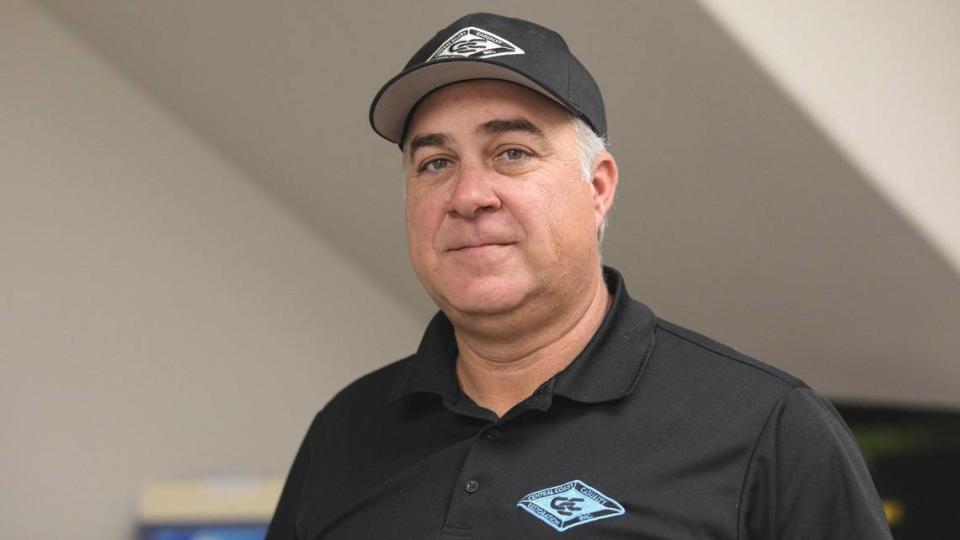
Water intrusion in Atascadero homes lead to damage, health impacts
After Central Coast Casualty came to Morin’s home to assess the water damage, she learned that the water that flooded into her home wasn’t just muddled and brown because of a little dirt. The water was considered grossly contaminated.
When it comes to the potential hazards that come with grossly contaminated water intrusion, “it’s really too much to talk about,” Vaca said. “The level of contamination can really be immeasurable.”
Morin, who is a lung cancer survivor with COPD (chronic obstructive pulmonary disease), said she couldn’t step foot in her home for months due to the potential health risks. During that time, two seatrain containers held Morin and Deats’ furniture, clothing and other possessions that made contact with the contaminated water.
Although Central Coast Casualty steam-cleaned everything with fabric material after removing it from the home, when Morin opens one of the boxes, she often starts coughing from the moldy fibers left behind.
“They go straight into the washing machine,” she said. “I’ve been washing for three months now.”
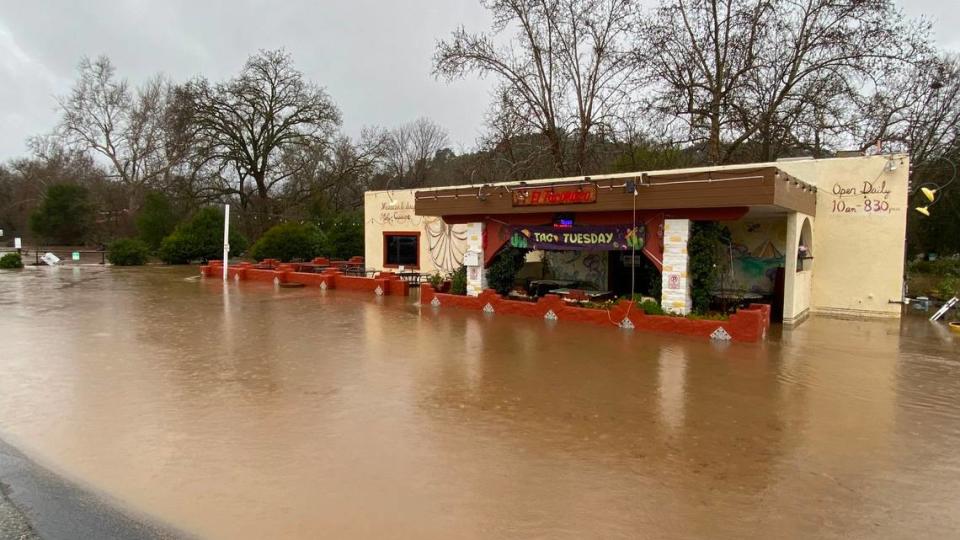
The home owned by Aaron Jenne and Jamie Lind on Portola Avenue, near Highway 41 and the Mexican restaurant El Taconazo, also flooded with what could be described as grossly contaminated water, although the water was not specifically classified by Central Coast Casualty.
The morning of Jan. 9, Jenne, whose single-story home on Portola Road is near both Atascadero Creek and Atascadero Lake, was watching anxiously as water from the creek flooded his backyard and came within yards of the house.
If anything, he anticipated any flooding in his home to come from the creek.
Then, at about 10:15 a.m., the Atascadero lake overflowed. The culvert that runs behind his home that was supposed to carry lake water overflow toward Highway 41 and Atascadero Creek was already filled with debris and failed to reroute the water.
Suddenly, the water rushed in, and instantaneously, “it was past our knees,” his partner Lind said.
“Within about 10 minutes of the lake starting to spill, we had three or four feet of water in the house and it started to ingress just from the base plates in the kitchen,” Jenne said. “There’s no amount of sandbagging that we could have done to prevent the water from coming in.”
Jenne estimated about 18 inches of contaminated water flooded the home and soaked at least four feet below the flooring into the concrete slab beneath the structure.
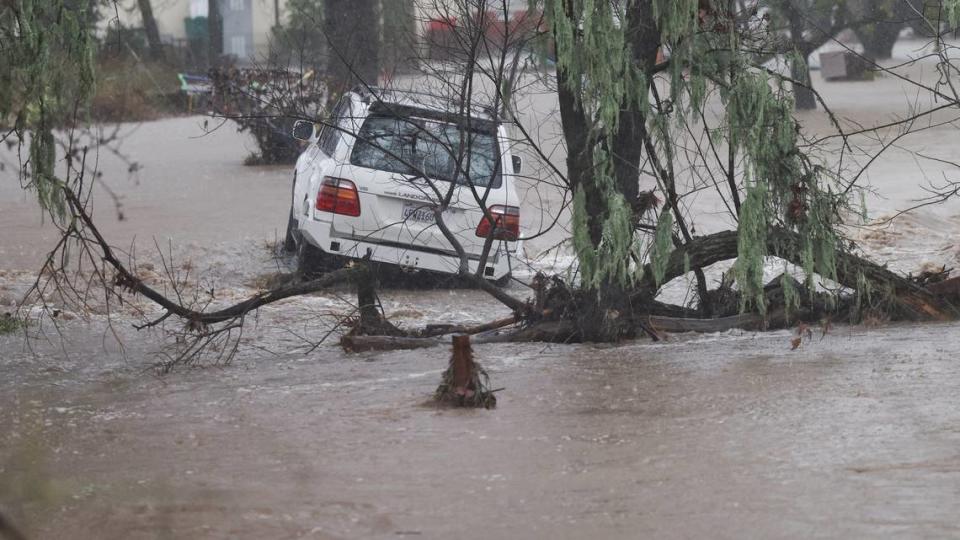
The family of three, which included son Indigo who was 4 at the time, had to trudge through the debris-filled water and into their truck before landing at the Hilton Home2 Suites in Atascadero.
Shortly after arriving at the hotel, the family started feeling sick, but Indigo got the worst of it.
Lind said her son had a sinus infection and severe eye infection that sometimes left him unable to open his eyes. Photos taken by Lind shared with The Tribune showed Indigo had red, swollen eyes and flushed cheeks after exposure to floodwater after the storm.
Doctors chalked it up to a “really gnarly eye infection,” and Indigo went through multiple rounds of antibiotics to clear it up, Lind said.
Grossly contaminated water can contain bacteria, viruses and even more agents harmful to human and animal health, Vaca said.
“When you’re dealing with the flood and the water is coming from the exterior, you also have to worry about pesticides and contaminants from litter and stuff coming off the earth into your home,” he said.
The psychological and emotional impacts of the flood and subsequent displacement continues to impact Indigo, his mother said.
The former “water baby” is afraid of taking baths and showers and doesn’t like to be alone in a room. When the water came rushing in on Jan. 9, mother and son were playing on the top of his bunk bed and watched as the contaminated water soaked his floor.
“This is definitely a pivotal moment in his development,” she said.
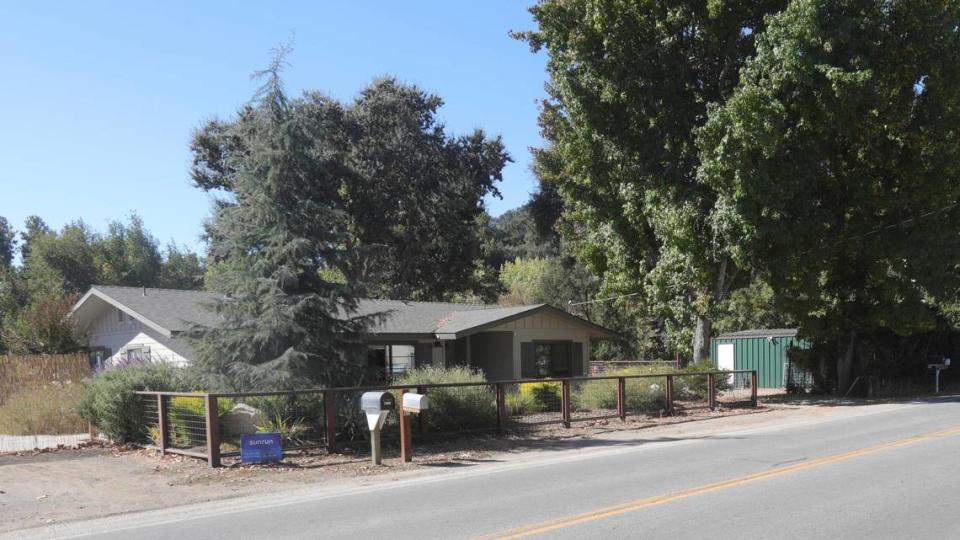
Atascadero homeowners face steep cost to remediate storm damage
On Jan. 10, Morin, Deats and three dogs checked into the Home2 Suites hotel in Atascadero.
They didn’t check out again until July 15, she said.
“There were quite a few of us (at the hotel), we called ourselves the Jan. 9 refugees,” she said.
Home2 Suites was where Morin and Deats met neighbors Lind, Jenne and Indigo, who didn’t get back into their home until a couple months later.
Both displaced Atascadero homeowners faced exorbitantly expensive home remediation and repair costs.
Jenne and Lind purchased their Atascadero home in 2020.
Jenne said his homeowners insurance denied his claim for coverage after the flood, since he did not have separate flood insurance. He estimated it will cost anywhere from $100,000 to $120,000 out-of-pocket just to get the house back to a state of habitability.
The homeowner was granted $14,000 from the Federal Emergency Management Agency — not nearly enough to cover the damage. Despite appealing to FEMA four or five times, he ultimately realized “that’s all we’re going to get from them.”
The family was displaced for about eight months, bouncing between the Atascadero hotel, a temporary apartment in Las Vegas and eventually living together in a fifth-wheel RV trailer in the driveway for about three or four months until it became possible to move back into the house in mid-September.
Morin estimated it cost about $100,000 to repair her home and pay for temporary housing while construction was ongoing.
Morin was able to secure about $21,000 from FEMA to pay for home repairs and a small sum to help pay for temporary housing during the remediation and remodel process.
She also obtained an $86,000 loan from the Small Business Association at a 30-year, fixed rate.
Aside from ruining furniture, flooring, cabinetry and clothing — essentially the full interior of her home — the contaminated water destroyed some items that cannot be replaced.
“My life pictures were completely gone, and all of my treasured books were gone. I mean, we couldn’t save them. There was no way,” Deats said. “My pictures from all of my life.”
“It was devastating,” she added. “I just resigned myself to the fact that it happened.”
In anticipation of another winter with heavy rainfall, Morin paid $9,000 out-of-pocket to install a drainage system to divert any potential overflow water from the creek across the street from her house.
Morin said, “$9,000 is a bunch of coin. It interfered with other things I wanted to do personally, but that’s OK. At least, theoretically, the water should not come into the yard the way it did.”
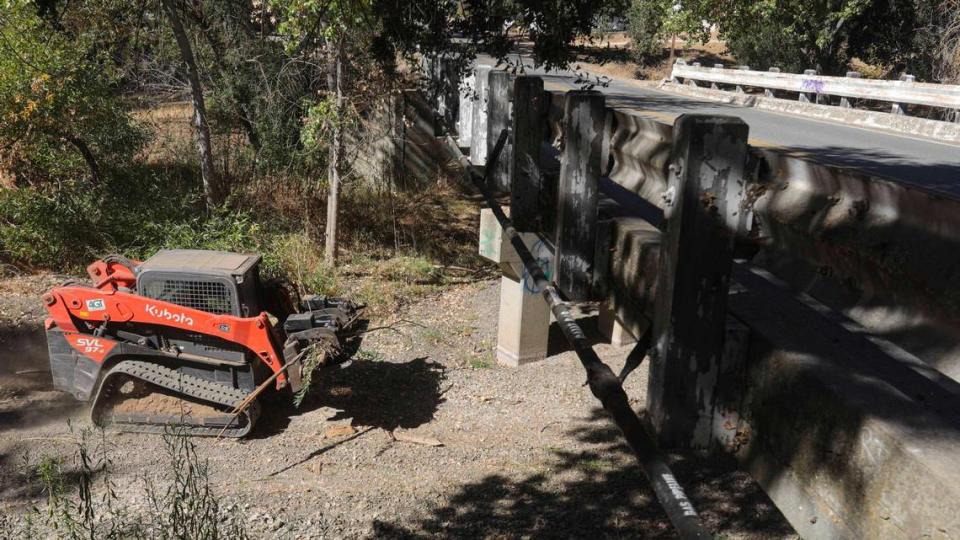
Atascadero homeowners say city displayed ‘lack of empathy’ for their plight
After the January storms, all homeowners The Tribune spoke with said they contacted the City of Atascadero in some capacity to inquire about future storm preparations.
Shortly after settling into the Home2 Suites hotel, Morin said she had a call with Atascadero Mayor Heather Moreno and then-city manager Rachelle Rickard, and “it was not a good conversation.”
The conversation centered around what the city will be doing to maintain public assets and protect homes from flood damage during future storms, she said.
“Without exaggeration, if you had been sitting in front of them, you would have seen their feet back-pedaling,” she said. “I was angry by the time I hung up.”
Morin said that, because Azucena Avenue is not maintained by the city of Atascadero, the city claimed it was not responsible for any damage or repairs made to the road. However, Azucena Avenue is not a private road. It is a road with public access, she said, but the city doesn’t do maintenance like fill potholes.
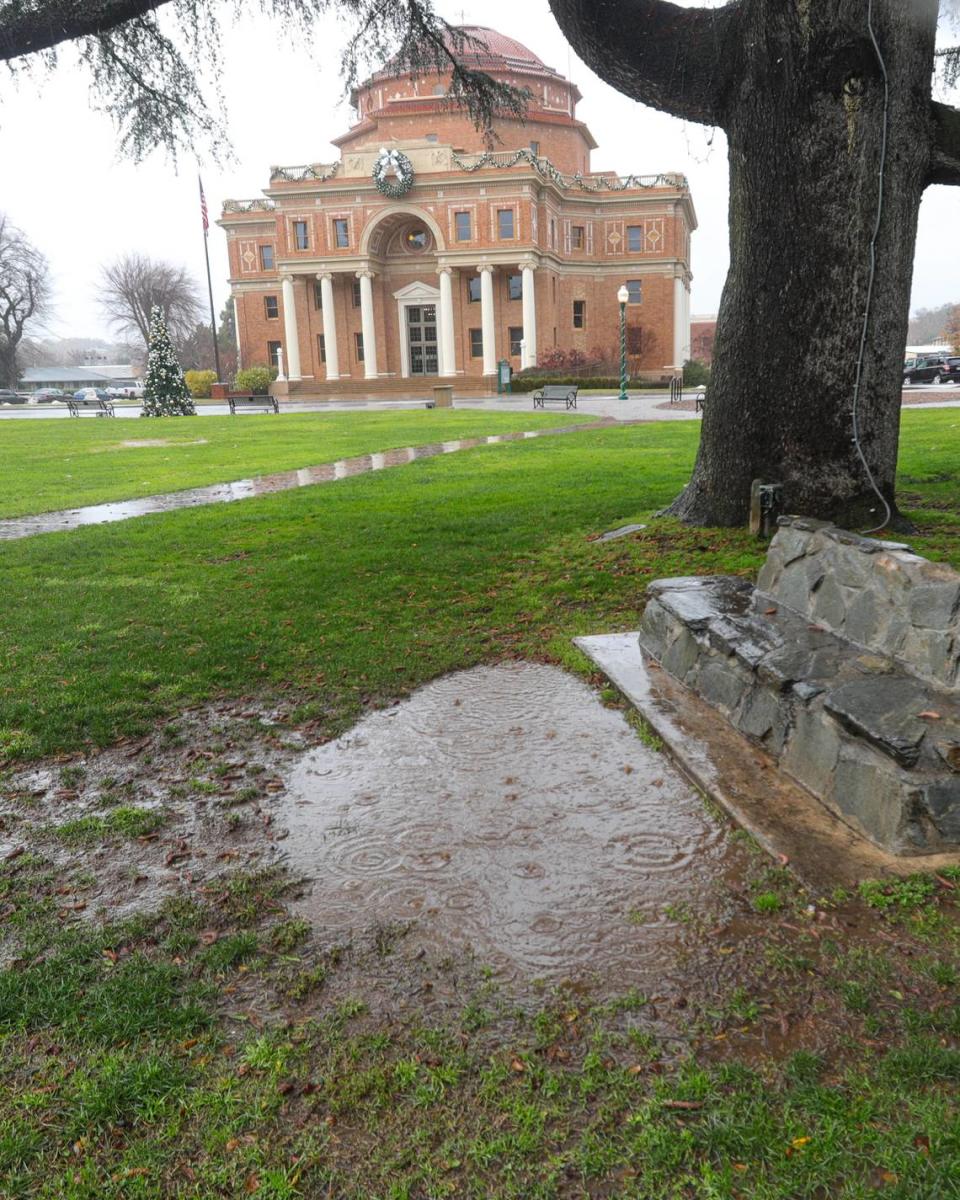
“The lack of concern, the lack of empathy, the lack of anything from the city,” she said.
The sentiment of the conversation was “too bad, so sad,” Deats echoed.
The City of Atascadero declined to comment on Morin and Deats’ concerns for this article.
Morin said she did speak with someone in the Public Works office last week about clearing debris from the culvert near her home to prevent any future flooding, and was assured that someone did perform the work in early December.
Jenne said his conversations with Public Works after the storm were unproductive.
“He basically said, we don’t have the time, we don’t have the money,” Jenne said. He kept pushing, and eventually Public Works said they would clear out the culvert along Highway 41.
But Jenne said he feels that is not enough to prevent another weather event from flooding his home again if city-owned assets are not maintained properly.
“It has been really frustrating. I think we’re all in the same boat. We’re paying pretty exorbitant property taxes,” Jenne said. “To hear the argument that the money is not there is just really frustrating.”

